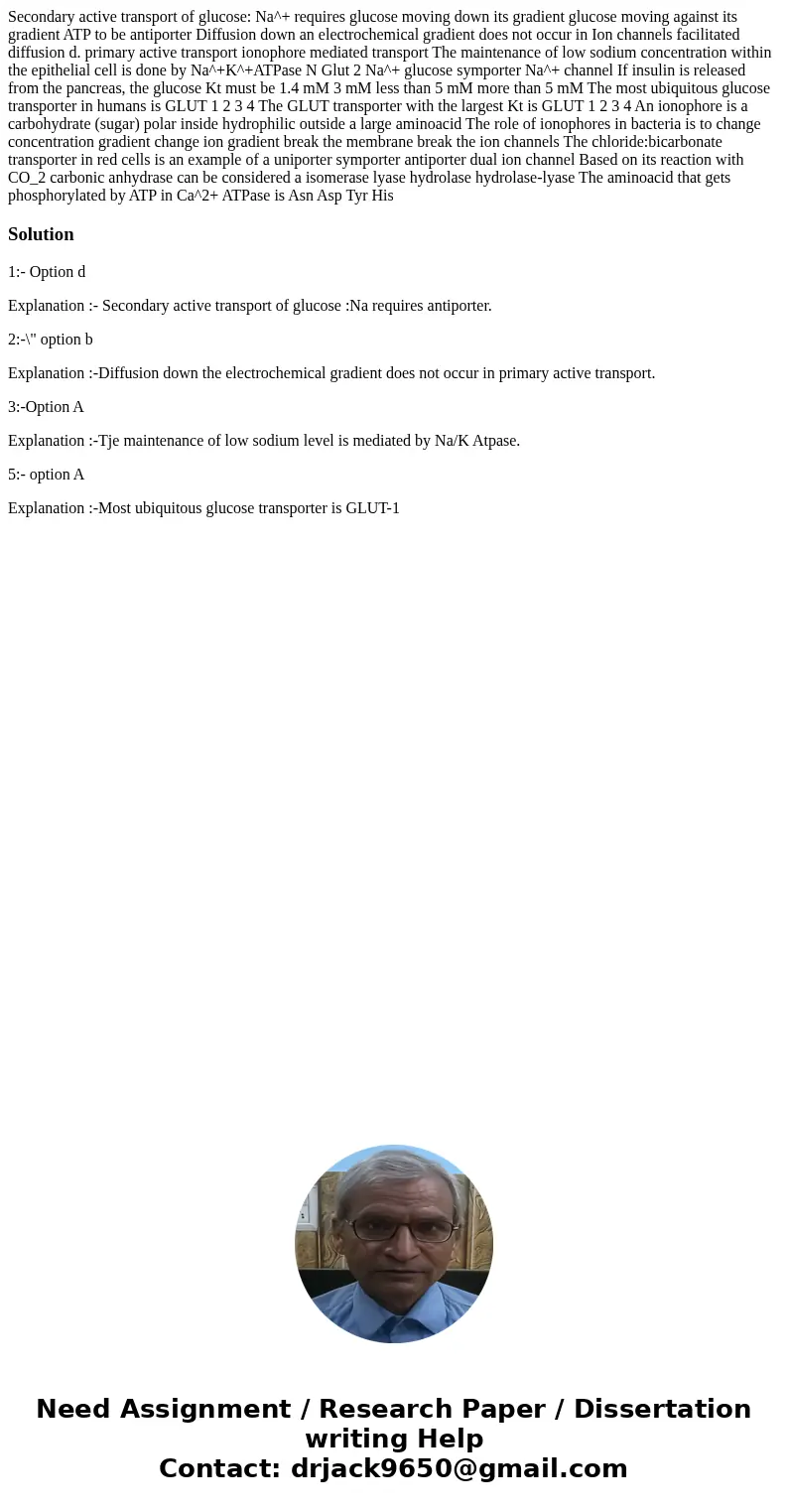Secondary active transport of glucose Na requires glucose mo
Secondary active transport of glucose: Na^+ requires glucose moving down its gradient glucose moving against its gradient ATP to be antiporter Diffusion down an electrochemical gradient does not occur in Ion channels facilitated diffusion d. primary active transport ionophore mediated transport The maintenance of low sodium concentration within the epithelial cell is done by Na^+K^+ATPase N Glut 2 Na^+ glucose symporter Na^+ channel If insulin is released from the pancreas, the glucose Kt must be 1.4 mM 3 mM less than 5 mM more than 5 mM The most ubiquitous glucose transporter in humans is GLUT 1 2 3 4 The GLUT transporter with the largest Kt is GLUT 1 2 3 4 An ionophore is a carbohydrate (sugar) polar inside hydrophilic outside a large aminoacid The role of ionophores in bacteria is to change concentration gradient change ion gradient break the membrane break the ion channels The chloride:bicarbonate transporter in red cells is an example of a uniporter symporter antiporter dual ion channel Based on its reaction with CO_2 carbonic anhydrase can be considered a isomerase lyase hydrolase hydrolase-lyase The aminoacid that gets phosphorylated by ATP in Ca^2+ ATPase is Asn Asp Tyr His
Solution
1:- Option d
Explanation :- Secondary active transport of glucose :Na requires antiporter.
2:-\" option b
Explanation :-Diffusion down the electrochemical gradient does not occur in primary active transport.
3:-Option A
Explanation :-Tje maintenance of low sodium level is mediated by Na/K Atpase.
5:- option A
Explanation :-Most ubiquitous glucose transporter is GLUT-1

 Homework Sourse
Homework Sourse